Questions about predator hunting in bad weather cause more Google searches than rumors about new gun laws.
“Do coyotes move in the rain?” “Is it too windy to hunt foxes?” “Is bright moonlight bad for predator hunting?” “How long after a snowstorm should I wait?”
The answers you find, however, can vary wildly in accuracy and usefulness. However, knowing the truth about predator hunting in bad weather can increase your hunting success rate more than a straight-shooting rifle.
The first truth about predator hunting in bad weather?
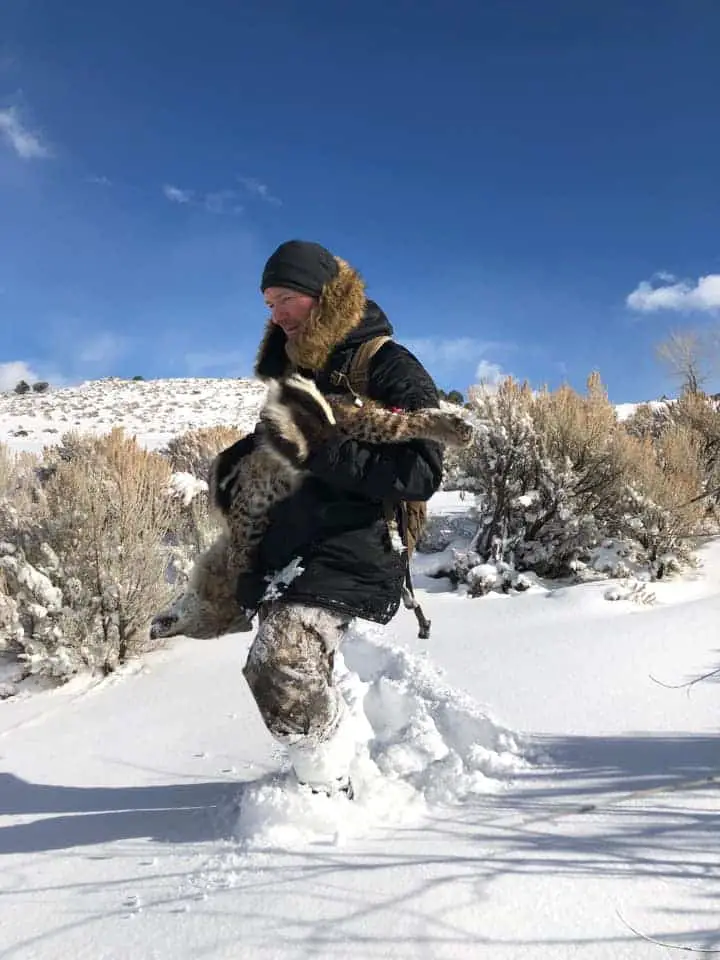
You’re aren’t Jack! You don’t like being cold and wet. If your clothing doesn’t keep you warm and dry, something even more powerful than the elements will force you to quit early and head home—doubt.
One frosty morning many years ago, I found myself shivering and looking down into a snow-covered valley that had seemed so promising the day before. Four hours before dawn, I was in place, the -20 degree wind in my face and my rabbit distress calls deceitfully promising breakfast for any predator struggling home through the snow.
Four empty hours later my burning fingers struggled to shut off the remote as I stood up and began to gather my gear. I promised myself I would never again waste time hunting in sub zero temps, blowing winds, and such deep snow. I’d learned my lesson, predators do not move in extreme weather.
Unclipping the red light from my shotgun, I heard a faint sound behind me. Turning, I noticed the unmistakable form of a large eastern coyote rapidly exiting the area. Five yards to the rear of my stand, fresh paw prints traced the path the coyote had made as it had circled me.
At some point during my stand, I had become solely focused on my increasing misery. I had mentally quit my stand hours ago and began to rationalize reasons why I should go home. As a result, I never saw the coyote that walked directly in front of me, circled all the way around behind, and came up within five yards to check me out.
Bad weather effects predator hunting both ways.
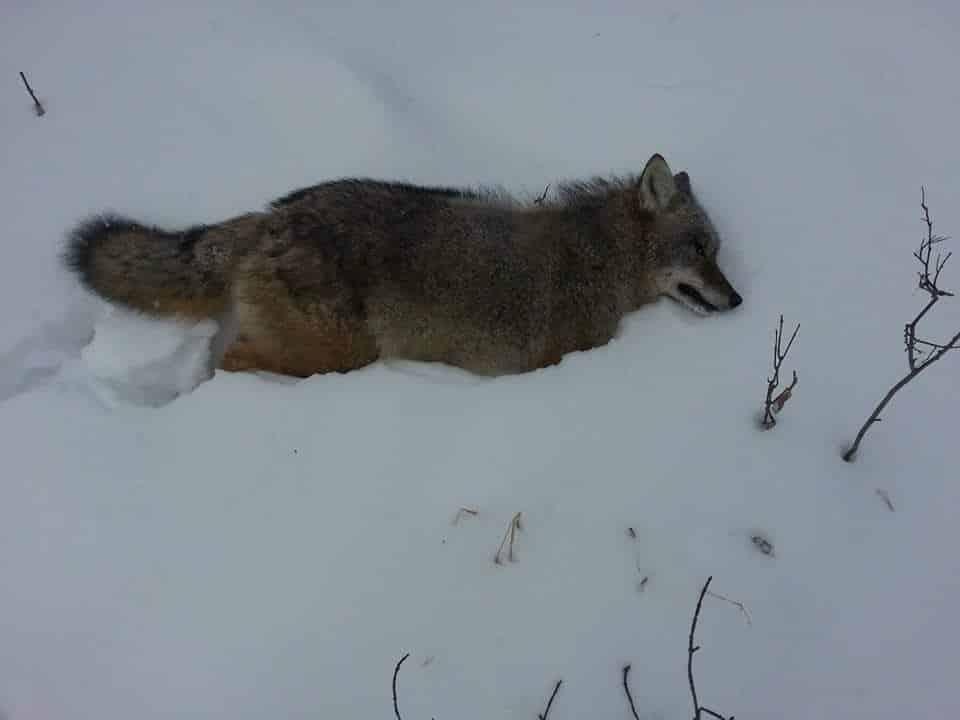
Days of heavy rain or a week of snowfall and temperatures in single digits will both drive a predator into cover and then force it out into the elements.
The truth is, you shouldn’t be just focusing on whether or not you’ll make a stand today based on the weather. Instead, use a forecast to determine how long predators will be most active before and after a weather event.
Stormy weather will encourage a predator to grab a meal before a storm, force it into cover during the storm, and, depending on the storm’s duration, determine how soon it can hunt again and hungry it will be after the storm.
The truth is you must hunt predators in bad weather.

Please note: If you use a link I provide to purchase a product, I may receive a small commission (at no extra charge to you).
Sorry, but you cannot opt to only hunt on windless, warm, and rain-free days. You have a regular job, a house to maintain, and a family to care for. So predator hunting will be your last priority, and you’ll be lucky to get in 10 days every season.
You might lose 2-3 of your available days to weather that is dangerous to your safety, ruinous to your equipment, or so severe that all predator movement has ceased.
Your remaining 7-8 days won’t be perfect either, but, as you will see below, wind, rain, and snow may reduce your comfort level, but they shouldn’t stop your hunting.
The advantages of predator hunting in bad weather.
Many of the conditions that the couch experts would recommend you not hunt in also proved you with some decisive advantages.
Wind blinds the defenses of all predators. The noise it makes will dampen the sounds you make approaching your stand. The faster air currents will diffuse and scatter your scent. The constant movement of branches and brush will camouflage your motions.
Rain also reduces a predator’s ability to hear you. It softens the leaves on your path. It silences the crack of a stepped-on twig. One thing it doesn’t do is eliminate predator movement. If it isn’t pouring, they are out, and so should you.
Snow may be the predator hunter’s best friend. But, like hunting deer after a snowfall, every predator is stripped of its natural invisibility.
It only takes a little inclement weather to magically (and briefly) turn you into a silent, invisible, super stalker and an expert tracker.
Hunting coyotes in the rain and calling foxes in the cold.
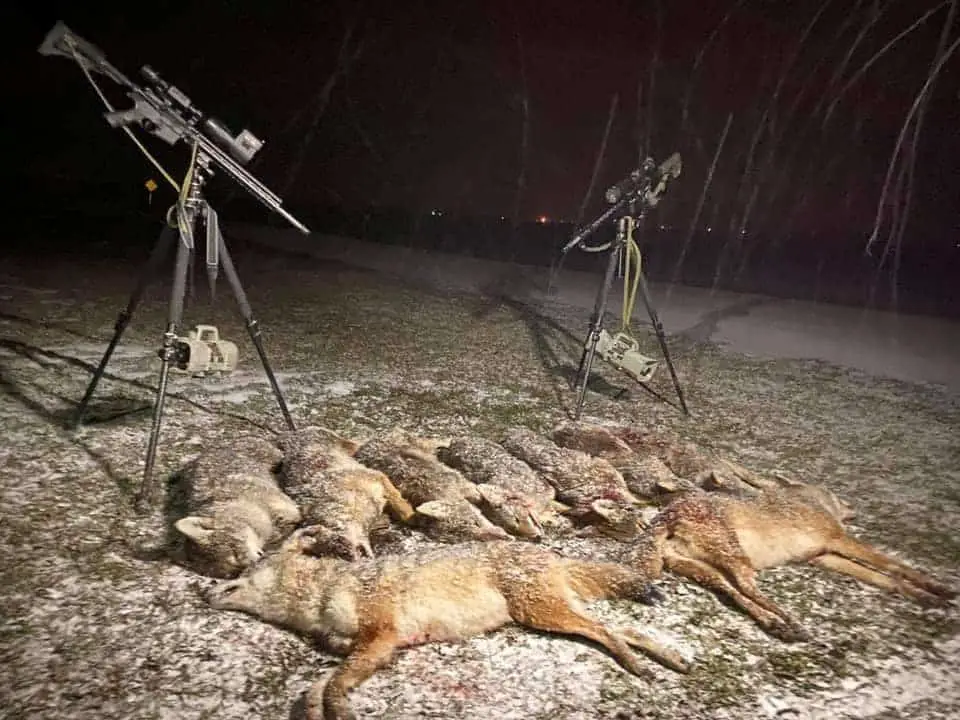
You already know how to dress for the weather conditions. Suitable predator hunting clothing should leave you warm and dry and extend the time you spend on a stand.
But what about hunting coyotes in the rain? Or, calling foxes when it’s below zero outside? Now you have to think about protecting your gear and making sure it stays warm and dry too.
The first thing you need to know and understand about your gear is whether it is water-resistant or waterproof.
A $2,000 ATN Thor 4 scope is water-resistant, with all the ports and cover securely closed. This means, yes, you can use it in the rain. However, you cannot leave it on the ground where water or snow could pool around it and submerge it.
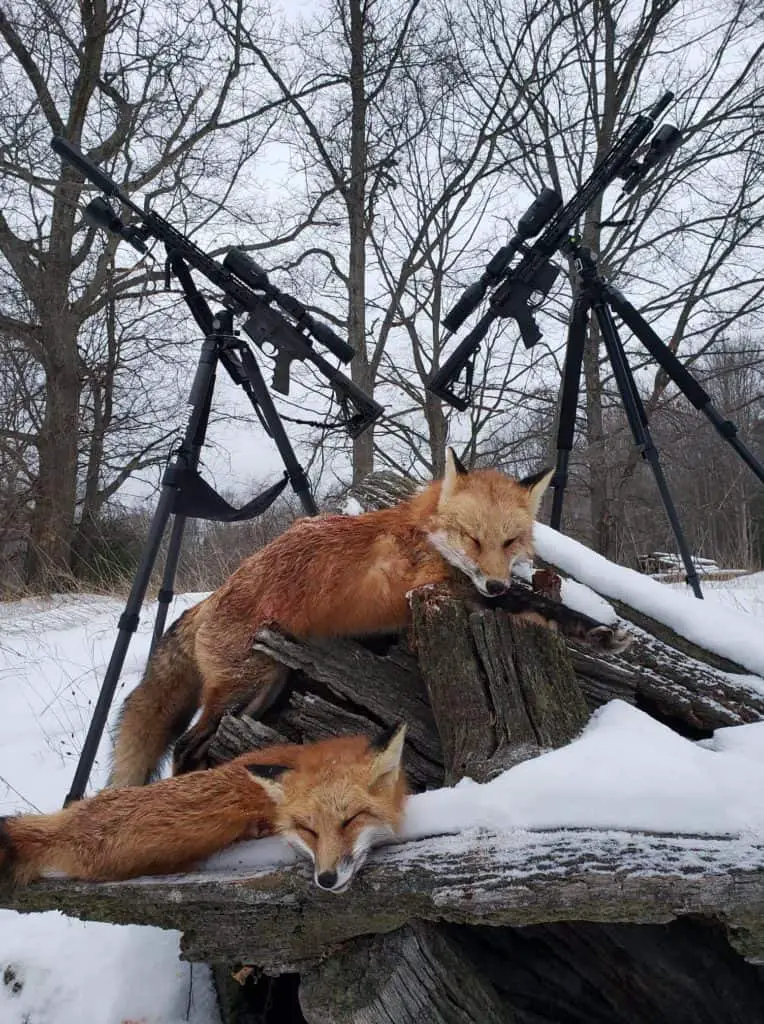
A $500 electronic caller rated for temps down to -40 still could crack like an egg if you blast the volume too high in sub-zero temps.
Always add a bit of extra protection (a cover, a mat to set your gear on) to your gear when it could get drenched. And the colder it gets, the more extra batteries you’ll need to carry inside your jacket,
Barometric pressure: The bad weather forecaster for predators.
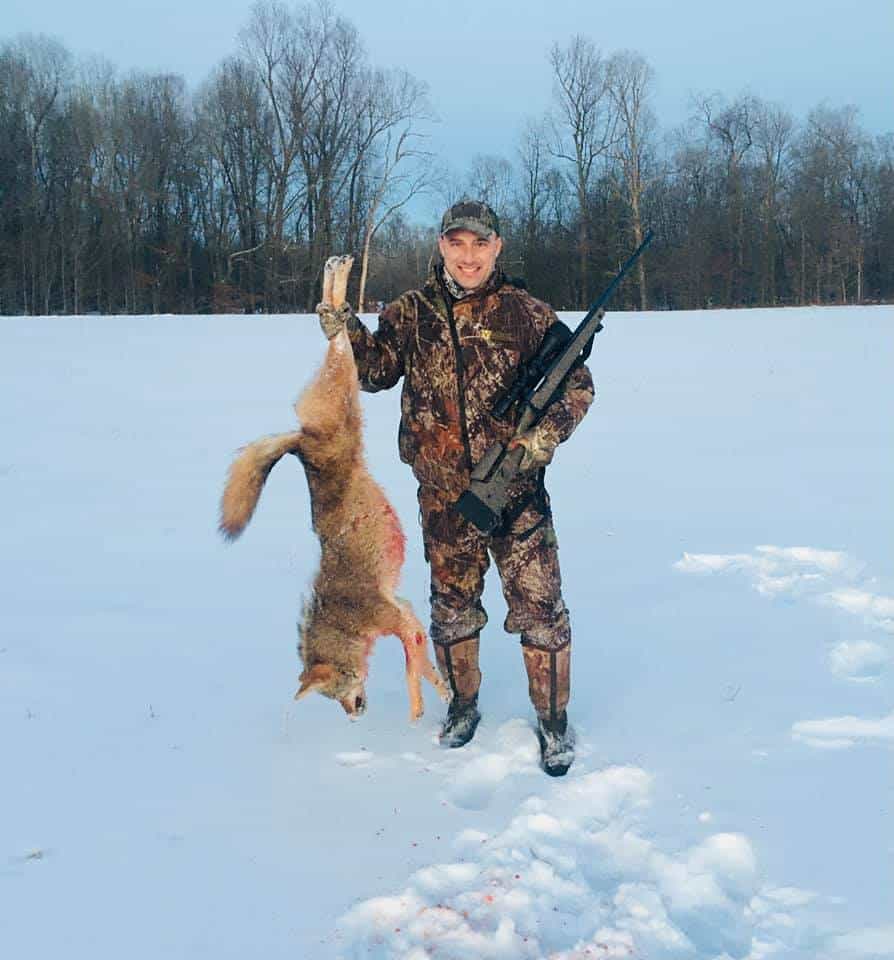
Think about how humans react to the word of an impending snowstorm or hurricane. First, we dash out and grab milk and bread like we would if the news had reported N.Y. and L.A. had just been nuked.
Predators, however, sense the approach of stormy weather through the changes in air pressure around them (barometric pressure).
It’s a simple formula: The faster and lower the barometric pressure falls, the sooner its arrival and the fiercer the storm.
How barometric pressure affect coyotes.
With the coyote’s detection of a sudden and sharp fall of barometric pressure, its behavior changes. For all intents and purposes, the coyote knows lousy weather is approaching, when it will arrive, and how bad things may get.
The coyote also associates a drop in barometric pressure with lower temperatures and higher winds.
The reaction is swift; the coyote will not wait for the storm to begin. It will start hunting right away. Why the sudden instinct to move? The simple fact is barometric pressure provides a 12-hour window, not a three-day forecast. It will move as quickly with the drop in barometric pressure as you would during a tornado alert.
Hunting predators before bad weather and storms.
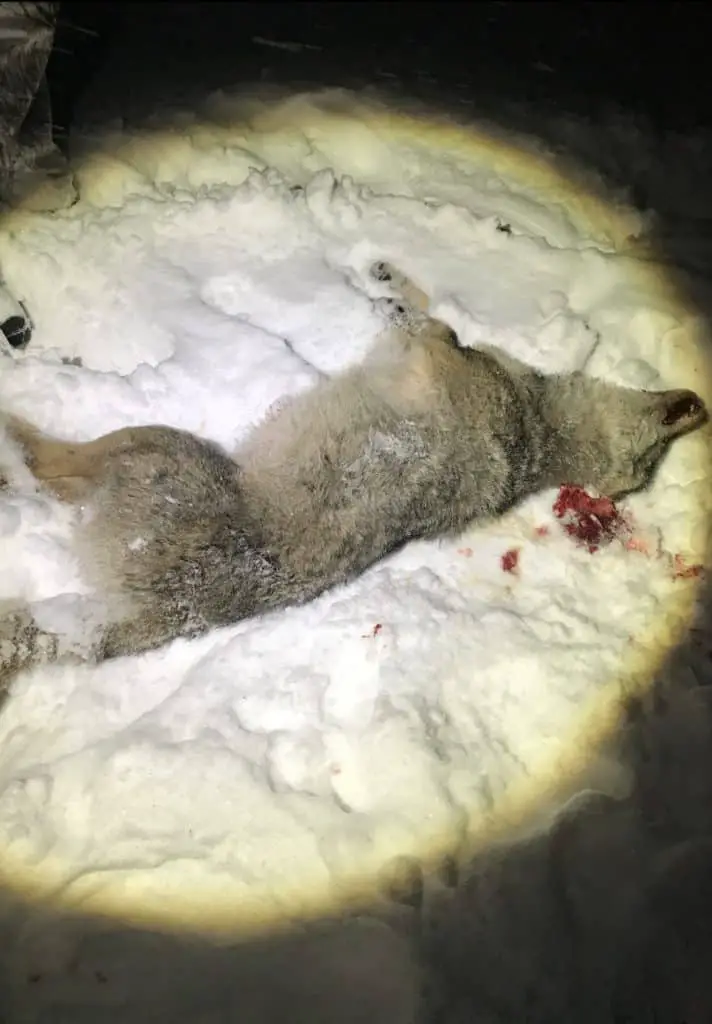
Ignore the extended forecast for now, and concentrate on what the weather will be in 12 hours (when the barometric pressure will be falling sharply enough to alert coyotes, foxes, and bobcats).
For example, let’s say your commute to work at 0700 on February 14th is likely to be dangerous due to snow accumulation.
At 7 p.m. the evening before, the skies above you may be clear, or there may be some light flurries. All still appears calm; however, near your hunting spot, things are starting to get interesting.
Hundreds of yards from your calling stand, a coyote will sense that the drop in barometric pressure it felt earlier has suddenly accelerated and deepened.
Instinct and experience tell the coyote, and all the other animals in the area, to fill their bellies and prepare to hunker down.
If you want to take advantage of the approaching storm, you need to be at your stand the evening before the heavy snow blinds drivers and sends cars into ditches. The formula for you is simple: 12 hours before the storm rages, you should be hunting predators.
Hunting predators in heavy snow.
Hunting predators in deep snow is either a simple waiting game or a matter of opening up a road for them to travel upon.
Wait for heavy snow to settle and form a hard top.
Every predator will be different, but in terms of waiting, it’s the predator’s weight versus the load-bearing capacity of the snow on the ground.
Bobcats don’t travel much when there is more than a foot of fresh, powdery snow to travel through. So call as much as you like; they won’t move further than 20-25 yards from their dens until the snow supports their weight.
Fox, too, will dramatically cut their travel after more than a foot of fresh snow. Again, however, once the snow has a hard top they can walk on, they are back to hunting and ready to come to your closed reed call.
Coyotes are another matter. They will travel and respond to calls in snow up to about 20 inches (19.5 inches for you sticklers). Above that amount, coyotes must push their chest and stomach through the snow, and most of their travel ceases.
The waiting game, therefore, consists of time + sunshine + defrosting and refreezing + wind. All four will determine how hard and how fast the snowpack can bear a predator’s weight. But even if the snowpack is two feet deep, if you can walk on it, every other predator can. If you can barely push your hand through it—then coyotes, foxes, and bobcats can walk on it.
How much snow is too much snow for hunting coyotes and foxes?
Leg length determines a predator’s ability to move in fresh snow.
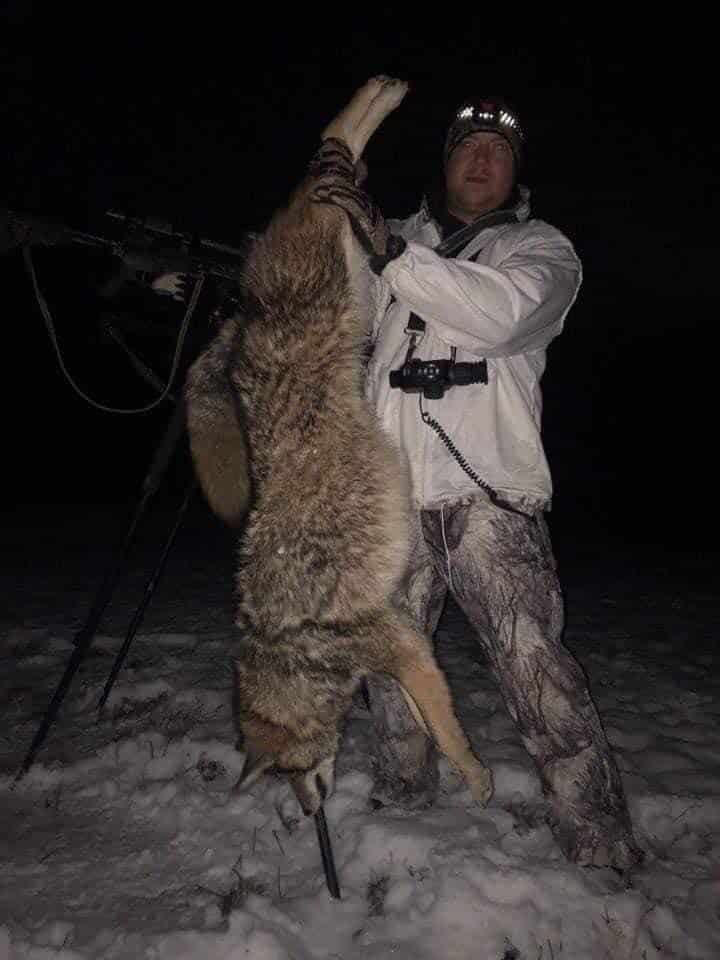
Coyote movement in snow.
For coyotes, in snow up to 5 inches, there is no decrease in movement. From 5 to 11.5 inches, expect a slower coyote commute and response time, but they will come to your calls. From 11.5 to 19 inches, the coyote will have to be hungry or angry, but they can make it if you wait long enough.
Fox movement in snow.
For red and gray foxes, snow up to 3 inches offers no problems or special calling procedures.
5 to 7 inches of snow isn’t enough to stop a fox from coming to your calls. Depending on its hunger levels during your stand, a fox will respond in snow up to 7 inches deep, but you’ll have to extend your stand time to allow it to get there.
Over 7 inches of shadow will stop most fox movement. So for you staying home and waiting for the snow to harden and settle is more productive.
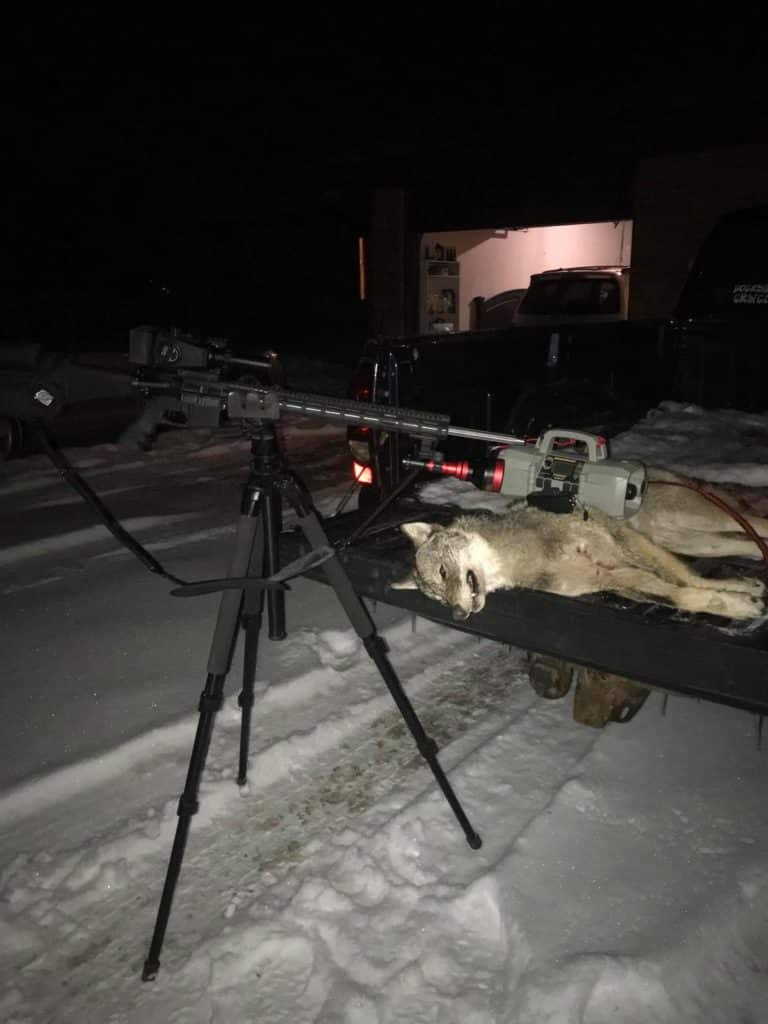
Plowing a path for predators in heavy snow.
After a heavy snowstorm, the first road opened for you is done by your local town or county road crew. Fortunately, it’s the same for your local predator. If you don’t believe me, walk out past your driveway the day after the plow has been through and scan the road. Somewhere nearby, you’ll notice coyote scat.
Once your driveway is clear, you can expect other predators to run along the plowed roads and use your driveway to explore further into the interior areas.
The same idea can be applied to areas you have scouted.
Imagine the field you have already determined to be a predator-rich region. The road you will use to access it will border this field on at least one side. What would happen if you cleared a path for any predators to get from the plowed road to deep inside the area? Perhaps even opened a lane from the road to any wood line for them to run on?
Turn a snow-packed field into a predator highway.
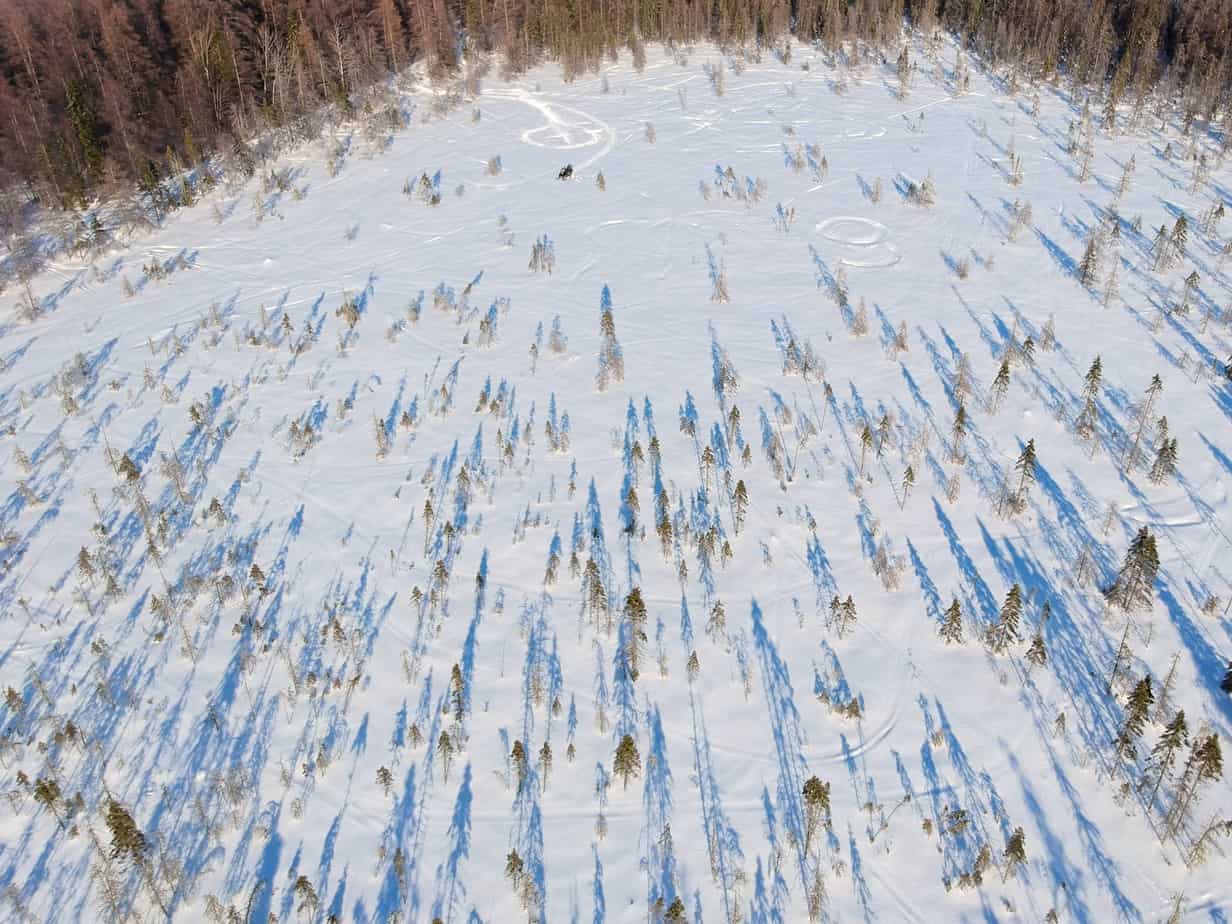
It only takes a little work with a snowmobile or an ATV to turn a snow-filled field into a great hunting stand. The twisting trails you make from just along the wood line and out into the area will encourage predators to investigate your calls, all without wasting calories pushing themselves through the snow.
If you are limited to snowshoes, start from a plowed road and, hugging the tree line, cut a trail that loops back to the road. Cutting paths allows road traveling predators to explore the edge of the woods and brings them right past your stand.
Snowmobile trails and coyote hunting.
With all legal and safety precautions met, snowmobile trails are one of the best kept secret hunting spots for predator hunters.
If you can get alongside a snowmobile trail when there are more than 3 feet of snow on the ground, you will call and take a ton of coyotes.
Recent studies have shown that, especially in elevations over 8,000 feet, in the conditions noted above, coyotes will use snowmobile trails for 35% of their nightly travel. So, no, you don’t have to live in Colorado; even your average sea-level dog will jump on these easy-to-travel highways every time.
The effects of bad weather on predators.
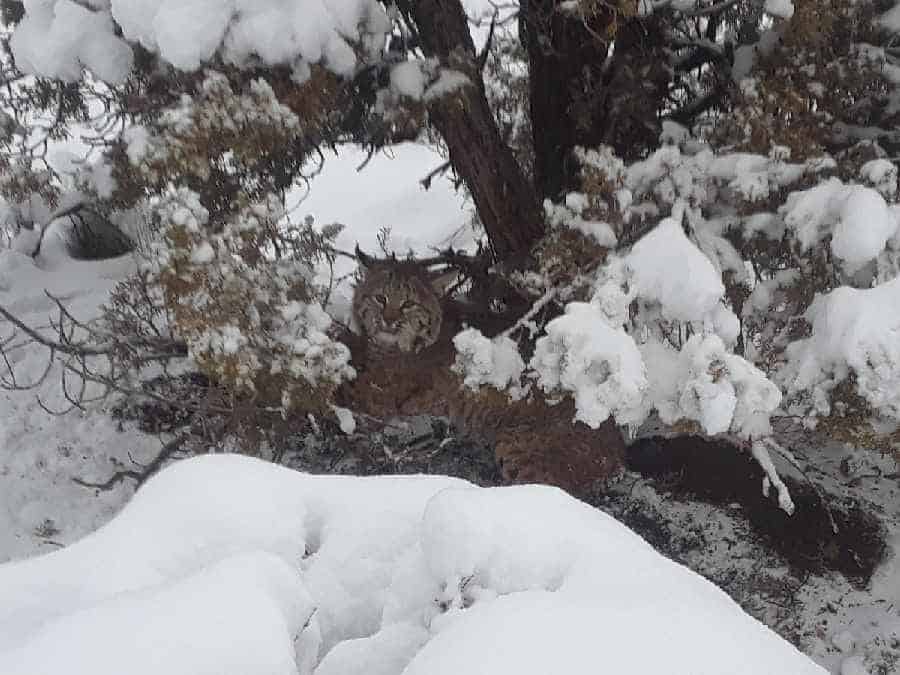
Foul weather has the same general effects on predators as it does on humans.
- They’ll hunt as long as possible before the weather forces them into a shelter.
- They’ll seek shelter from the winds, dropping temperatures, snow, and rain in heavily treed locations and dense brush.
- Their bellies, not necessarily the storm, will dictate when to leave their shelter and recommence moving and hunting.
The belly rules, at least for hunting eastern coyotes in bad weather.
A 33-pound eastern coyote in winter (existing on rabbit) would need to consume 9lbs (3 snowshoe hares or 5 cottontails) of rabbit every two days to meet its basic energy needs.
As the snow deepens (increasing calorie expended for travel) and the temperatures dip below zero, the question becomes, “How long can the coyote remain in a shelter?”
General weather tips for predator hunting.
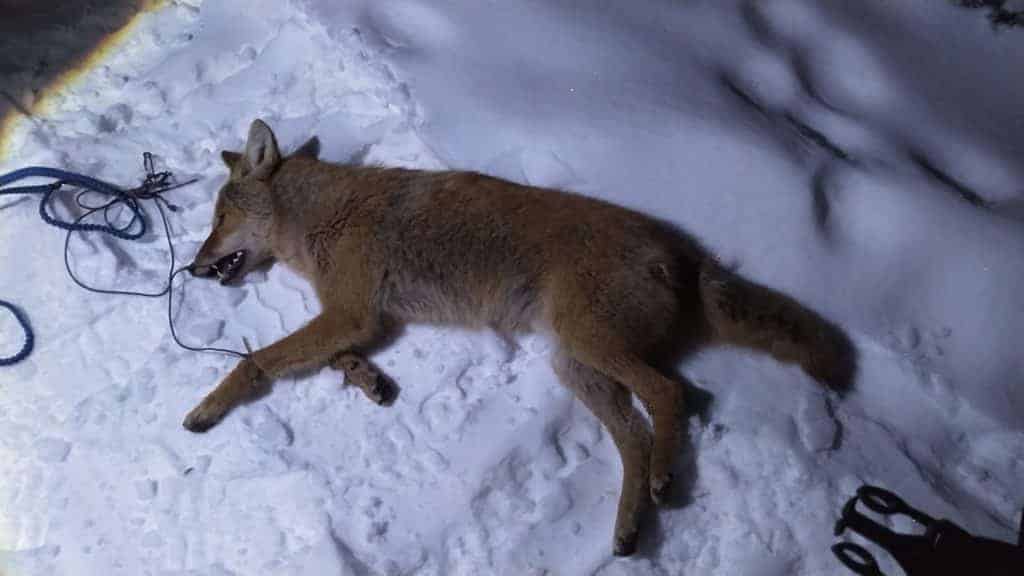
Looking at a little light rain, a bit of fog, or flurries in your forecast? Here’s a few general tips to use when the weather is less than perfect.
Barometric pressure.
If it’s dropping low and fast, like a bad day at the stock market, get on stand!
Fog
As long as your optics can see through it, light fog under a cloudy sky is a predator’s favorite time. Of course, it would be best if you were out, too, calling and taking advantage of the fog.
Wind: when is it too windy to hunt predators?
0-5 mph is probably the best wind speed for calling predators, but up to 20 mph won’t keep the coyotes from hearing your calls and coming into them.
Winds over 25 mph? If you find some shelter from the wind, you will be right where the predators are sheltering and hunting too.
I’ll bet you already think strong winds mean to stay at home. Well, I got the best video for coyote hunting in high winds you will ever watch. Check these guys out!
Temperature
Most predator hunters will tell you that the perfect zone is between 20 and 50 degrees. But I suspect that a 30-degree band of perfection is nothing more than the ability of even inexpensive hunting gear to provide a comfortable hunt.
Colder temperatures will test the limits of your gear and, usually, your fingers. In sub-zero temps, a 20-minute stand in lousy clothing will feel like an eternity of misery. On the other hand, appropriately dressed, hunting predators in the bitter cold is unquestionably more productive.
After three days of subzero temperatures, a coyote needs to replenish the calories burned, staying warm. As long as you keep the volume below the maximum (to avoid damaging your speaker cone), your rabbit in distress calls will sound quite delicious.
Light rain and snow fall.
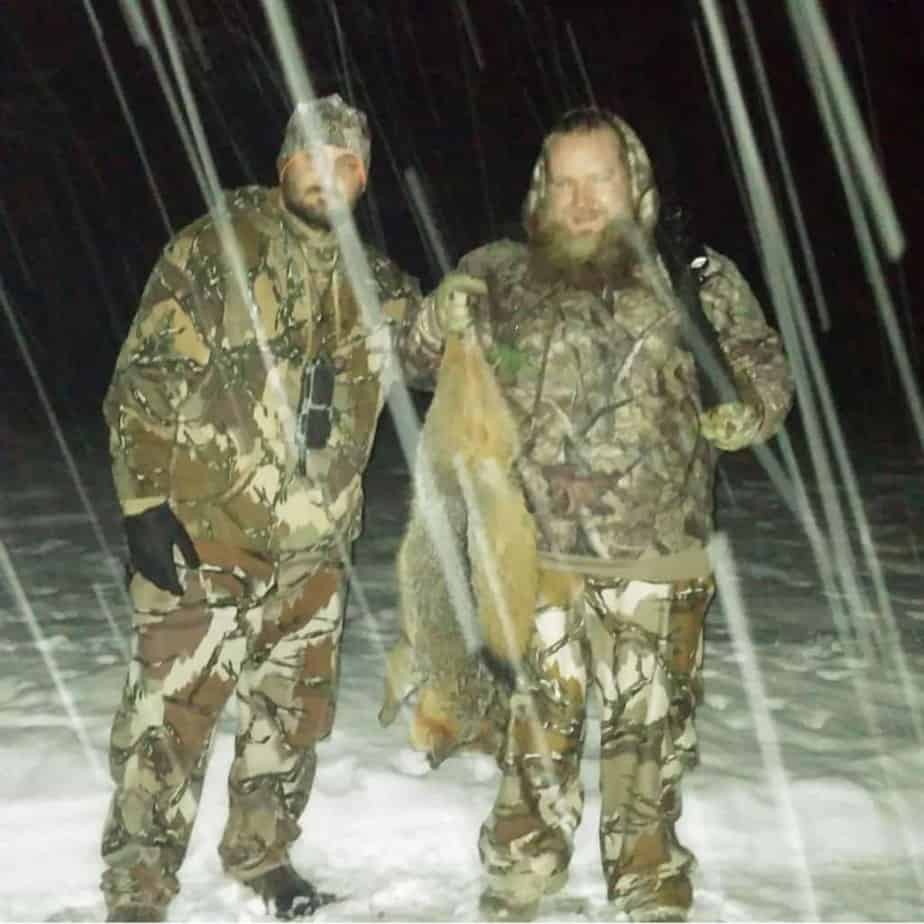
The real limiting factor with precipitation is its effect on your light and scope. At night, even light rain and snow can produce an image that looks like thousands of pieces of broken glass fluttering around a few yards in front of you.
If the weather temporarily blinds your scope image at night, consider checking a weather app or simply waiting a few minutes to see if it clears. In the winter, a brief, blinding storm of flurries may pass in 5 to 10 minutes. In warmer temps, fog and rain showers sometimes dissipate before you can even get back to your vehicle.
Snow on the ground.
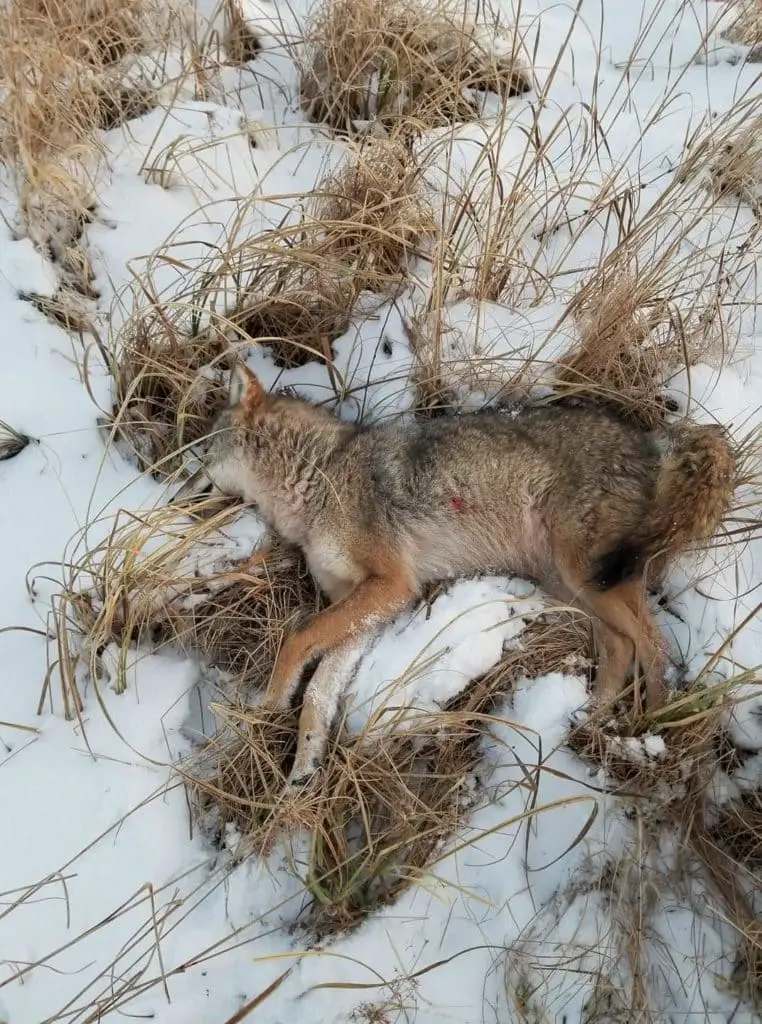
At the end of the day, it’s essential to realize that the only limiting power of snow on a predator’s mobility is its load-carrying capacity. With the snow’s exposure to sun, wind, rain, and temperature changes, that capacity will increase daily. So test untouched areas of snow around your home to determine when you can make your next stand.
Snow also comes with one huge benefit for all hunters; it strips animals of their camouflage. So if you are moonlight hunting or using a red scanning light, you will see predators long before they are in range.
One thing to avoid–it’s crunchy snow. If you must walk on it, consider yourself detected and be prepared to go quiet for 30 minutes before you start calling.
And don’t forget to give predators extra time to make their way through snow as they approach your caller. If the snow on the ground is over 4-6 inches deep, double your stand time.
Moonlight.
Consider this your reward for reading this far: increased moonlight means increased coyote movement. Bobcats, however, are unaffected by moonlight intensity, according to scientific research.
Dew point and humidity.
Wow! Have we gone too far? Well, here it is:
Decreased dew point and decreased humidity mean less travel by predators. It has to do with dehydration, but that’s as far as the research took me.
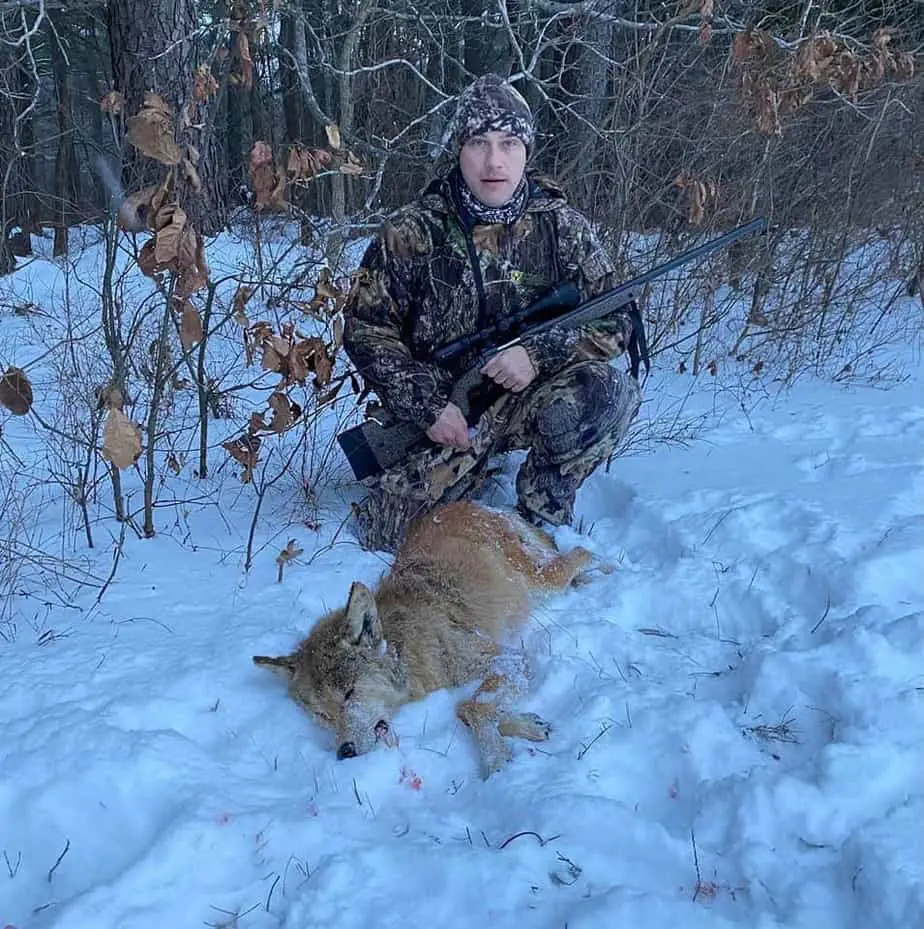
Hunting predators in bad weather is simple!
- Do your scouting first.
- Use the right calls. If your budget is limited—no problem! Try these perfect closed reed calls. Or these open reed calls that won’t freeze up.
- Learn how to really call a predator in close.
- Hunt up to 12 hours before a storm hits.
- Know where to aim for the perfect shot.
- Set up a bait pile!
- Hunt in less than perfect weather.
Predator hunting in bad weather.
Is it worth it? In the end, only you can decide. So, get out there in the rain, the snow, the cold, and the wind. And, let me know how you did?

